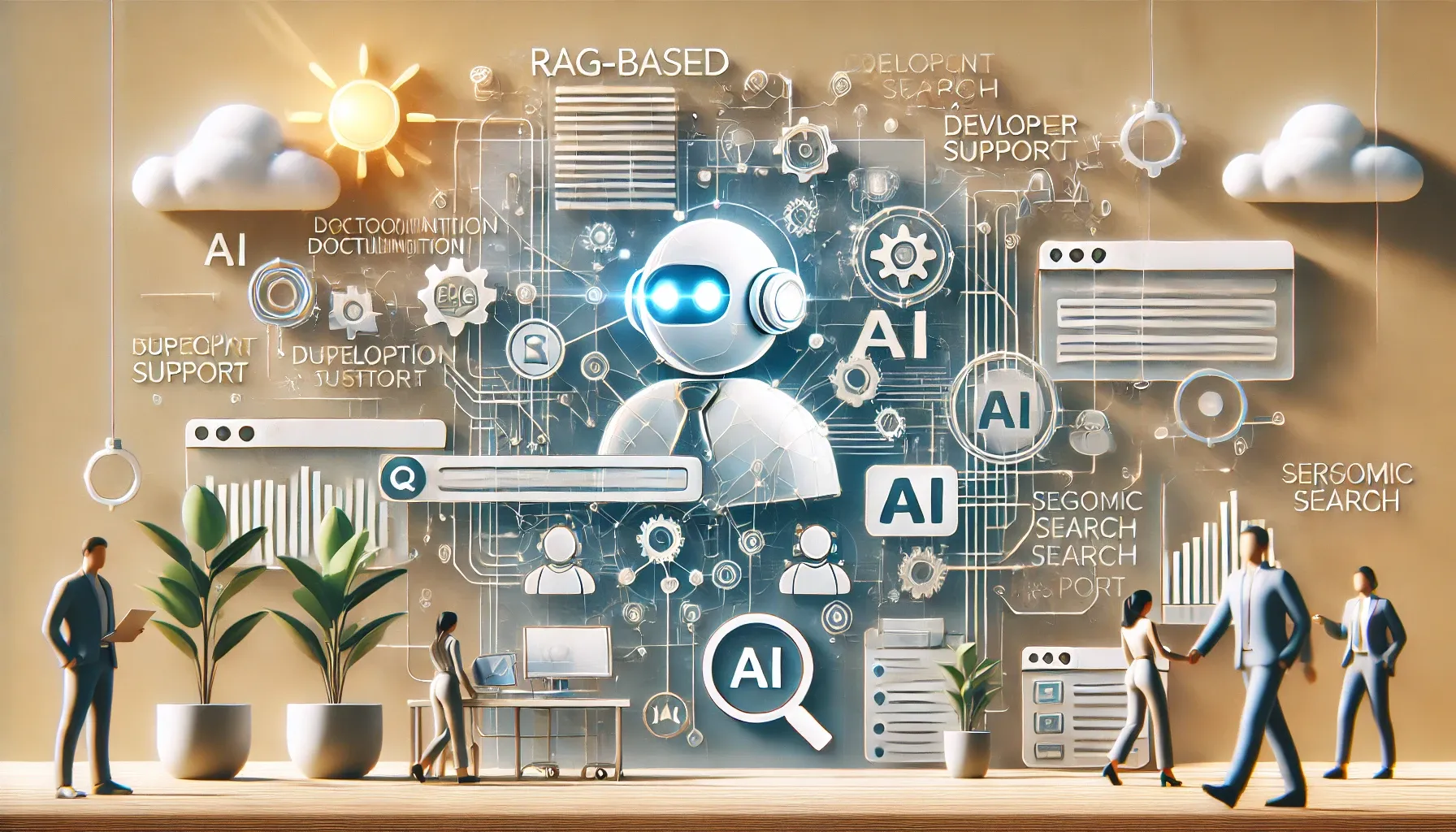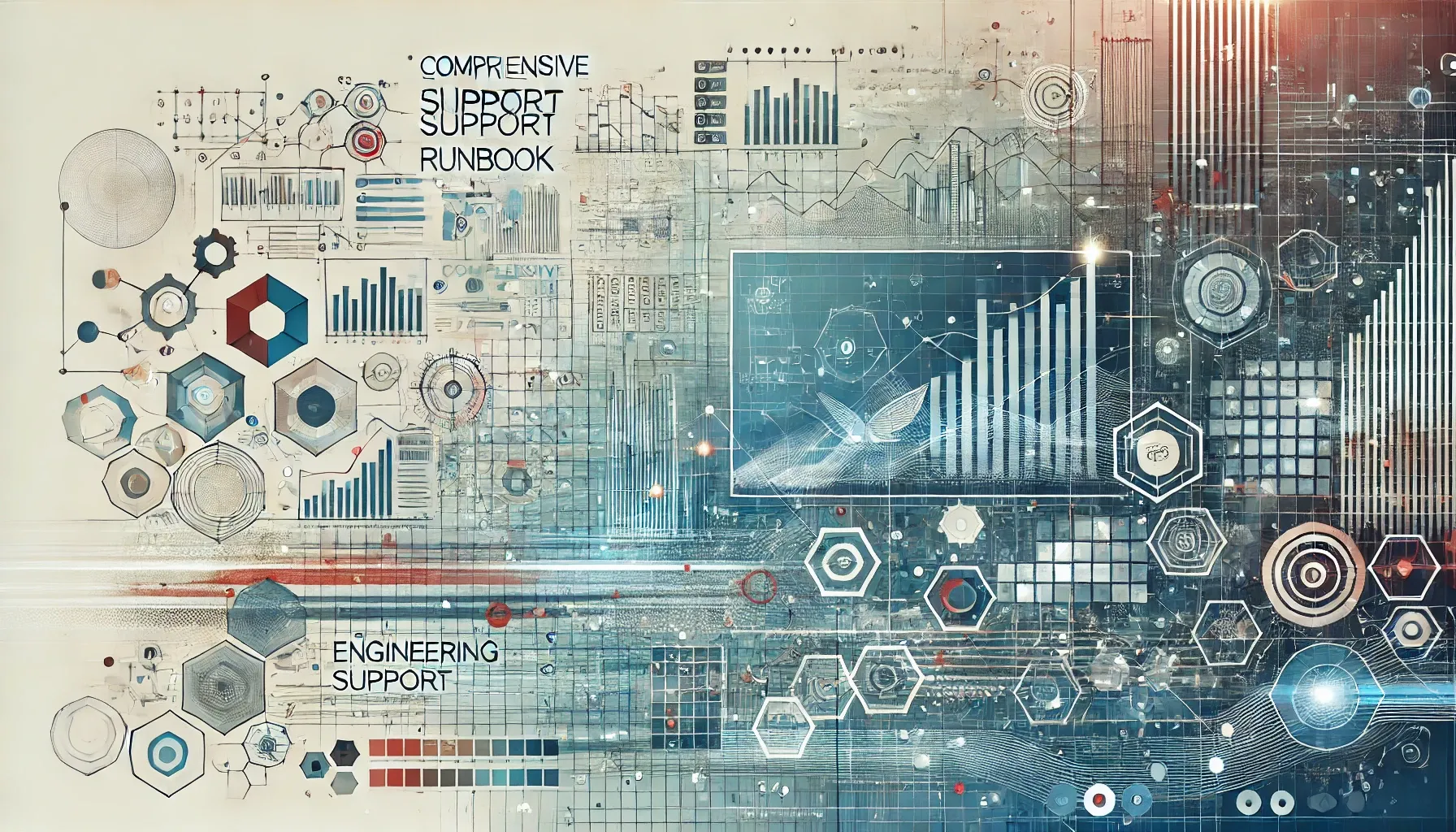On this page
In today's fast-paced development environments, timely and accurate support is crucial for maintaining productivity and efficiency. One of the most innovative approaches to enhancing developer support is using a Retrieval-Augmented Generation (RAG)- based search method. This method leverages advanced AI technologies to index and make accessible a wide range of developer resources, including documentation, support tickets, resolutions, Slack threads, and other contexts where developer troubleshooting is captured.
What is RAG-Based Search?
Retrieval-Augmented Generation (RAG) combines the strengths of retrieval-based and generation-based AI models. The retrieval model first searches through a large corpus of documents to find relevant information, and the generative model then uses this information to generate a coherent and contextually accurate response. This hybrid approach ensures that developers receive the most pertinent information tailored to their specific queries.
Indexing Developer Resources
The first step in implementing a RAG-based search method is to comprehensively index all available developer resources. This includes:
- Documentation: Manuals, guides, and API documentation that provide foundational knowledge.
- Support Tickets: Historical support tickets and their resolutions, which offer insights into common issues and solutions.
- Resolutions: Detailed explanations of how specific issues were resolved.
- Slack Threads: Conversations and discussions that capture real-time troubleshooting and problem-solving efforts.
- Other Contexts: Any additional sources of troubleshooting information, such as internal forums or wikis.
By indexing these diverse resources, the RAG-based system ensures that all relevant information is at its disposal when generating responses.
Semantic Search with a ChatGPT-Type Interface
Once the resources are indexed, the RAG-based system enables a semantic search capability through a ChatGPT-type interface. This virtual assistant allows developers to interact conversationally, making it easier to find the information they need. The semantic search understands the context and nuances of the queries, providing more accurate and relevant results compared to traditional keyword-based searches.
For example, a developer could ask, "How do I resolve a memory leak issue in our production environment?" The RAG-based system would retrieve relevant documents, past support tickets, and Slack discussions related to memory leaks, and generate a comprehensive response based on this information.
Ensuring Up-to-Date Content
A critical aspect of the RAG-based search method is ensuring that all ingested content is up-to-date. Outdated or incorrect information can lead to inaccurate recommendations, which can frustrate developers and hinder productivity. Therefore, it's essential to regularly review and update the indexed resources. Automated tools can help flag outdated content, but human oversight is often necessary to ensure the highest accuracy and relevance.
Feedback Mechanism
To maintain the quality and relevance of the indexed content, the system should include an option for developers to provide feedback. If a developer encounters outdated or incorrect information, they can flag it for review. This feedback mechanism helps keep the knowledge base current and reliable. Additionally, flagged content can be prioritized for updates or deprecation, ensuring that the support system evolves with the organization's needs.
Benefits of RAG-Based Search
Implementing a RAG-based search method offers several benefits:
- Improved Discoverability: Developers can easily find the information they need, reducing the time spent searching for solutions.
- Accurate and Contextual Responses: The combination of retrieval and generation ensures that responses are relevant and tailored to the specific query.
- Enhanced Productivity: By providing quick and accurate support, developers can focus more on coding and less on troubleshooting.
- Continuous Improvement: The feedback mechanism ensures that the system remains up-to-date and continually improves over time.
Technical Requirements
To implement a RAG-based search method, several technical prerequisites are necessary:
- Data Storage: A robust system for storing and indexing large volumes of documents and interaction logs.
- Computational Resources: Sufficient computational power to run AI models for both retrieval and generation.
- Integration Capabilities: Tools to integrate the RAG system with existing support platforms, documentation repositories, and communication channels.
Challenges and Considerations
While the RAG-based search method offers many benefits, it also presents several challenges:
- Data Privacy: Ensuring that sensitive information is handled securely and in compliance with privacy regulations.
- Scalability: Managing and processing large volumes of data without compromising performance.
- Integration: Seamlessly integrating the RAG system with existing tools and workflows.
Success Metrics
To evaluate the effectiveness of the RAG-based search method, consider tracking the following metrics:
- Response Accuracy: Measure the relevance and correctness of the generated responses.
- User Satisfaction: Collect feedback from developers to gauge their satisfaction with the support system.
- Support Ticket Volume: Monitor the reduction in the number of support tickets as more developers find answers independently.
- Resolution Time: Track the time taken to resolve issues before and after implementing the RAG system.





